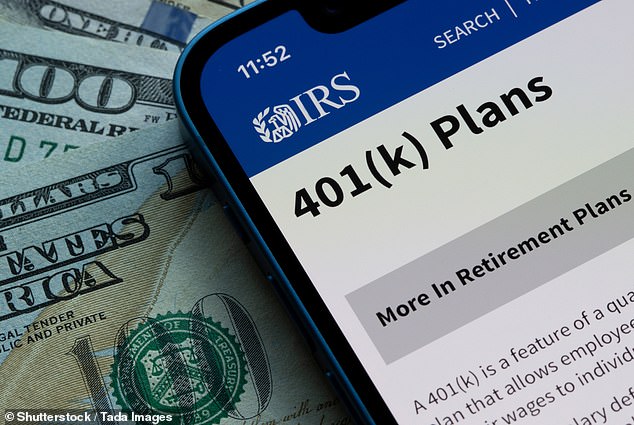Older workers can now supersize their savings under biggest 401(K) rule change in decades
Older workers can now put more savings than ever in their 401(K) accounts, under new rules that take effect in 2025.
Each year, the Internal Revenue Service (IRS) announces the maximum amount that savers can put into their workplace retirement accounts, adjusted for inflation.
Americans over the age of 50 can also put extra money into their retirement savings through catch-up contributions.
Starting next year, workers between the ages of 60 and 63 will have a higher catch-up contribution limit, the IRS says. announced Friday.
The change is intended to help boost the savings pots of people in their early 60s, who may not have put enough money aside earlier in life or may have dipped in and out of the job market to start a family.
Older workers can now put more savings than ever in their 401(K) accounts, under new rules that take effect in 2025
Starting in 2025, workers between the ages of 60 and 63 can make a catch-up contribution of up to $11,5000 to their 401(K).
This means that people who reach that age sometime next year can put up to $34,750 into their workplace retirement plans.
That’s up about 14 percent from 2024, and marks the biggest change in 401(K) contribution rules in two decades. The Wall Street Journal reported.
The change comes amid a series of inflation adjustments by the IRS, which the tax authorities make every year.
The maximum amounts that people of any age can save in their retirement accounts in 2025 were also announced.
Americans under age 50 can contribute up to $23,500 to their 401(K) plans next year – an increase of $500 from 2024.
Those between 50 and 59 can contribute a total of $31,000, those between 60 and 63 can add $34,750 and those over 64 can add $31,000.
Employees who participate in 403(b) and the federal government’s Thrift Savings Plan will also be able to increase their annual contributions to $23,500 in 2025, up from $23,000 in 2024.
However, some annual contributions remain the same.
The limit for annual contributions to an IRA remains at $7,000 and the IRA catch-up contribution limit for people age 50 and older remains at $1,000 for 2025.

Starting in 2025, workers between the ages of 60 and 63 can make a catch-up contribution of up to $11,5000 to their 401(K)

The IRS also announced the maximum amounts that people of any age can save in their retirement accounts in 2025
It comes after the IRS announced a 2025 increase in the standard deduction, the portion of annual income that is exempt from tax.
For single taxpayers and married individuals filing separately in 2025, the standard deduction will rise to $15,000, an increase of $400 from 2024.
For couples filing jointly, it will be $30,000 by 2025, an increase of $800 from the previous year.
Heads of households, meanwhile, will receive a standard deduction of $22,500, an increase of $600 from 2024.
The IRS makes these adjustments every year to account for inflation, which has been on a downward trajectory in recent months.
Annual inflation was 2.4 percent higher than a year earlier in September, a marked decline from the peak of 9.1 percent in June 2022.
This means that While taxpayers will see higher standard deductions again for 2025, the increases announced last month are less than those in recent years.
